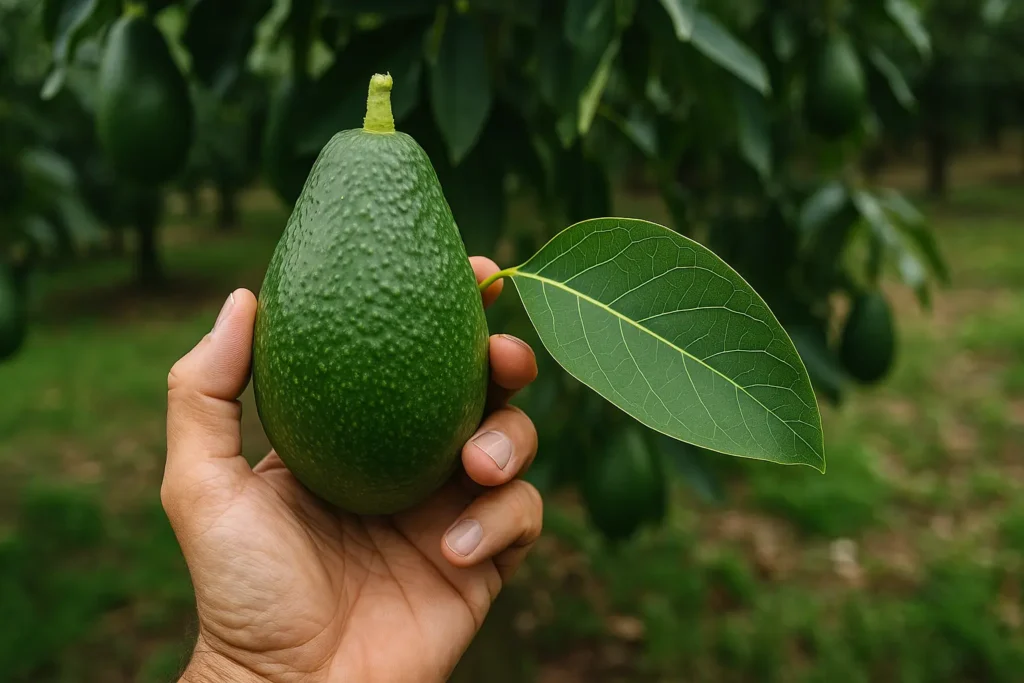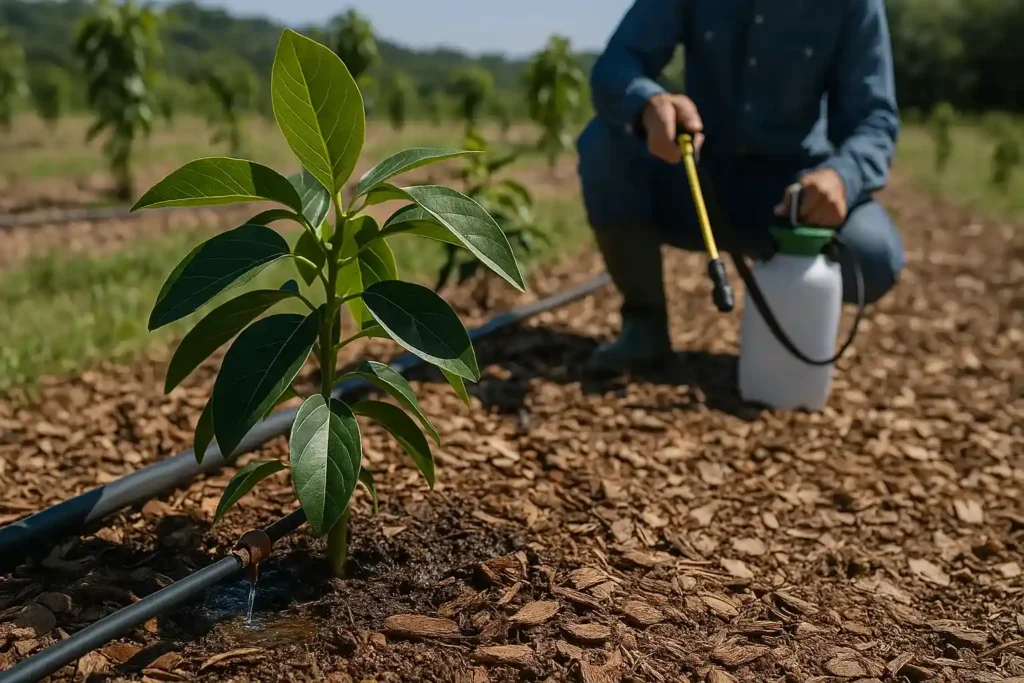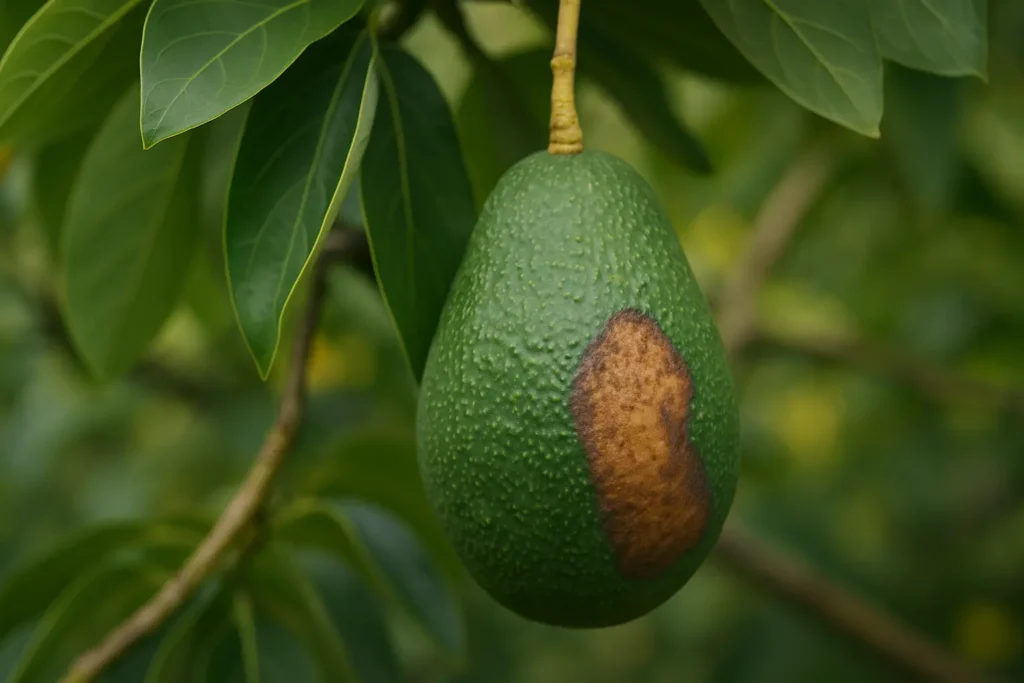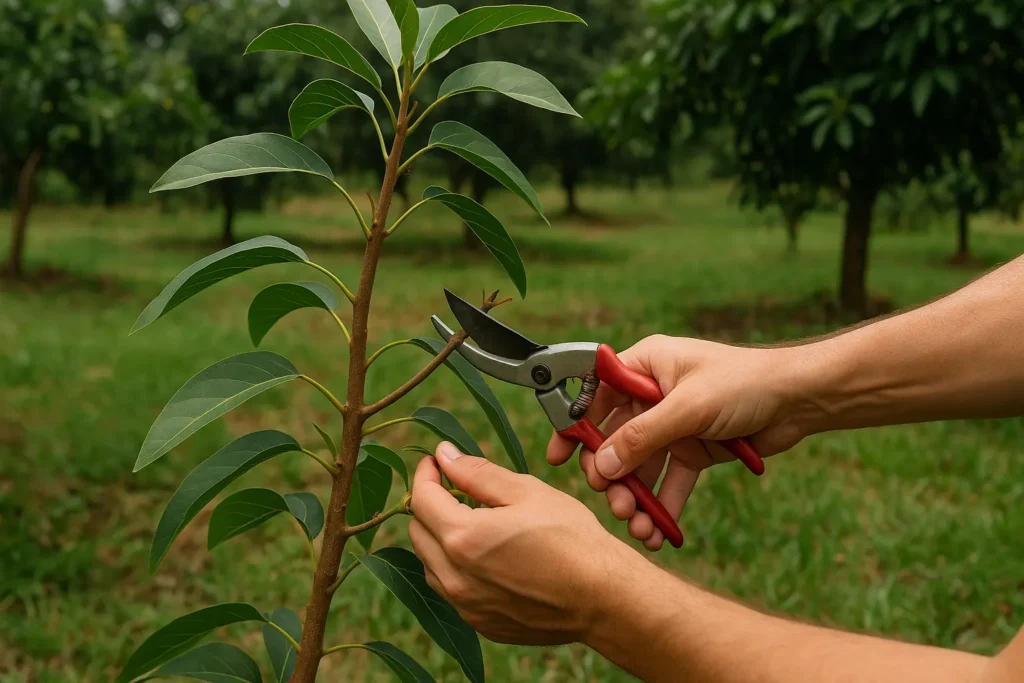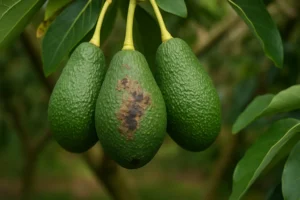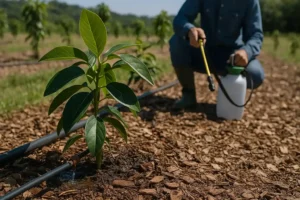The Hass avocado is one of the most prized crops for its flavor, texture, and nutritional value. But, like all crops, it is exposed to threats that can affect its health and productivity. Hass avocado diseases represent a constant challenge for growers and exporters, as they compromise fruit quality and crop profitability.
At Fruty Green, we understand that timely and responsible handling is key to ensuring healthy fruit. That's why, in this guide, we explain the most common Hass avocado diseases, how to identify them, and what measures to take to effectively control them.
Main Diseases of Hass Avocado
1. Phytophthora cinnamomi – Root rot
Root rot caused by Phytophthora cinnamomi is one of the most devastating diseases of Hass avocados. This soil-borne fungus primarily affects the absorbing roots, causing progressive deterioration of the plant.
Symptoms and diagnosis:
- Wilted and chlorotic leaves, even with adequate watering.
- Reduction in foliage size and poor branching.
- Dark, soft, smelly roots when dug.
Want to learn how to identify this disease in the field? Watch this short video. “Symptoms of Phytophthora in avocado crops” and recognizes the signs in time.
Recommended handling:
- Improve drainageExcessive humidity favors the growth of the fungus. It is recommended to avoid waterlogged soils and use raised beds if necessary.
- Application of phosphites: Products based on potassium phosphonates or phosphorous acid can inhibit the growth of the fungus.
- Preventive control: Do not plant in soils with a history of Phytophthora without first disinfecting or changing the substrate.
2. Colletotrichum gloeosporioides – Anthracnose
Anthracnose is another of the most common Hass avocado diseases, especially in humid areas. It attacks leaves, flowers, and fruit, drastically reducing commercial quality.
Symptoms:
- Irregular black spots on leaves and fruits.
- Progressive discoloration of the skin of the fruit.
- Premature drop of infected avocados.
Control strategies:
- Sanitary pruning: Remove infected branches and fruits to reduce the fungal load on the crop.
- Copper fungicidesPreventive applications of copper or combinations with mancozeb are effective if made before flowering.
- Microclimate management: Promoting good ventilation with adequate distances between trees reduces relative humidity and the risk of infection.
3. Oidium spp. – Powdery mildew or ash
Although less impactful, powdery mildew is a fungal disease that affects the appearance and growth of Hass avocados, especially in dry, poorly ventilated conditions.
Visible signs:
- Presence of a white powder on the upper and lower sides of the leaves.
- Deformed or stunted shoots.
- Delay in the growth of new vegetative structures.
Handling recommendations:
- Application of sulfurElemental sulfur in powder or colloidal suspension is effective and economical.
- Removal of affected tissues: Removing infected leaves and shoots helps to stop the spread.
- Training pruning: Keeping the cups open allows more light and air to enter, conditions that are not favorable for the fungus.
Integrated Disease Management of Hass Avocado
Success in disease prevention and control is not based on a single action, but on a combination of strategies that work together. At Fruty Green, we apply a comprehensive approach that includes:
1. Biological control
We promote the use of beneficial microorganisms such as Trichoderma spp. and Bacillus subtilis, which act as antagonists against the pathogens that cause the main diseases of the Hass avocadoThese biological agents colonize the soil and rhizosphere, competing for space and nutrients with harmful fungi.
2. Rational chemical control
When chemical interventions are necessary, we prioritize those with low environmental impact and compatibility with exports. All our treatments are applied based on phytosanitary analysis and technical recommendations, respecting safety intervals and avoiding the development of resistance.
3. Cultural and health practices
- Regular pruning and disinfection of tools.
- Removal of plant debris from the soil.
- Irrigation management to avoid excess moisture.
- Crop rotation or soil resting when severe outbreaks are identified.
Postharvest and Disease Control
Cold chain and health
Hass avocado diseases can also manifest or worsen after harvest if good handling practices are not followed. That's why at Fruty Green we ensure an efficient cold chain, where the fruit is stored, transported, and distributed under controlled conditions to prevent the proliferation of fungi and bacteria.
Reuse of affected fruits
Some fruits that present superficial imperfections or slight damage are destined for alternative processes such as:
- Guacamole production.
- Avocado oil.
- Purees and smoothies.
This way, we reduce waste and make the most of each harvest, even if it was partially affected by disease.
Certification and Quality Control
Our commitment to product safety and quality is reflected in the implementation of systems certified under international regulations such as GLOBALG.AP and HACCP. These protocols ensure that all our practices (including the management of Hass avocado diseases) meet the most demanding market standards.
Each batch is carefully evaluated from the field to the point of export, ensuring traceability, safety, and consistent quality. Learn about our certifications!
Plant Health for Sustainable Production
Hass avocado diseases represent a constant challenge, but also an opportunity to innovate and improve agricultural practices. With early diagnosis, integrated management, and technical commitment, it is possible to maintain healthy and productive crops.
At Fruty Green, we work every day to deliver disease-free avocados, grown with respect for the environment and with processes that guarantee quality from root to table.

